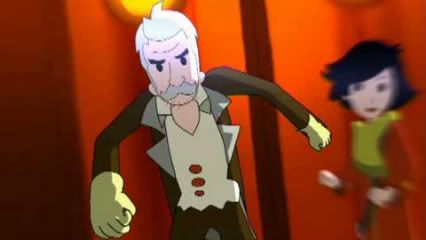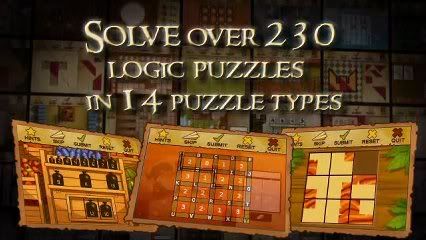May’s Mysteries: The Secret of Dragonville will be hitting shop shelves very, very soon (12th August in fact). We tracked down developer V5 Play Studio to ask some questions; but not before solving puzzles for complete strangers we met along the way, and looking for a fork hidden in a paddling pool full of spoons.
CG: Why release your first game on DS? The rivalry between Nintendo’s handhelds and mobile gaming is heating up. What are the advantages of releasing May’s Mysteries on DS rather than, say, itunes? Or 3DS, for that matter?
V5: When we decided what kind of game and platform we would develop for, we noticed a gap in the DS market for puzzle adventure games. By “gap” I mean a small number of quality games combining puzzle and adventure genres. Besides, DS has 150 million users, so it wasn’t too difficult to choose that console. The path to market on DS is more difficult than the equivalent on iTunes. But once a DS product reaches the shelves, I think it’s more likely the efforts will pay off than on iTunes. Of course, we didn’t neglect the mobile and online market. At the moment, we’re porting the game to PC/iPhone/iPad and getting ready to try out in the iTunes lottery. As for 3DS, sales have yet to meet expectations. So I believe we will wait until the console reaches a critical mass of users before we start development on that platform.
CG: What games influenced The Secret of Dragonville? There seems to be a taste of Professor Layton in there.
V5: The puzzle adventure genre, even though it seems it has taken off in recent years, is really an evolution and a twist on the genres that have been here for over two decades. From very puzzle-oriented edutainment titles such as Castle of Dr. Brain (and the whole array of successful products that followed that title), to classic point & click adventures and even visual novels, the core puzzle-solving and adventure gameplay has always been there. Professor Layton is one of the games from that genre, which is probably the best of all technically. While studying different projects from that genre, we tried to understand which features most appeal to fans and to focus our development on implementing such features as best we could.
CG: Could you give us a story synopsis?
V5: Gameplay is located in a semi-real world, with the story and atmosphere which should appeal to both young and older audiences alike. It’s a story of a clever girl, with a knack for solving puzzles, whose brother was lost in an odd town. While searching for her brother, she meets many eccentric characters (some of them will help her, some will be phoney friends, and others will be obvious enemies), and before the end of game she will reveal a few huge secrets and mysteries. The introduction to the story is not long, it throws a player right into action, and the whole concept is reminiscent of a movie. I hope players will like the concept.
 CG: As the story doesn’t directly affect gameplay, you had a lot of freedom in what you could write and how you could write it. How and why did you come up with the script that you did?
CG: As the story doesn’t directly affect gameplay, you had a lot of freedom in what you could write and how you could write it. How and why did you come up with the script that you did?
V5: Each puzzle or task in the game is actually related to the story. For example, on the way to a hidden location in town, a fountain full of piranhas will stand in your way. There will be two wooden boards by the fountain. In order to get across the fountain, you will have to solve the puzzle by placing boards to create a temporary bridge so you can cross the water. Of course, we had more freedom in selecting the story and the environment where our game is placed. Like I mentioned before, we tried to create a story which both young and older players would like.
CG: From what we’ve seen so far, a lot of effort seems to have gone into the graphics in terms of style and animation. How important is the visual element of the game?
V5: The game’s graphics is an element we’re very proud of. That’s the element of a game which makes the first impression on a player and it’s very important that a game’s graphics attracts players at once. Of course, without good gameplay, not even the most beautiful graphics can help the game make a good impression. So we were trying to achieve the best possible quality in every element of the game.
CG: Rather than being a story punctuated by puzzles, you’ve also included a ‘hidden object’ element and rhythm-based games. Do you see this mix of genres as a gamble, or a calculated risk?
V5: The most important feature of our gameplay is solving the puzzles. There are 277 puzzles sorted into 14 types like Write Answer, Check Answer, Colour Area, Connect the Dots, Crossing, Draw Lines, Hidden Picture, Matches, Pouring, Placement, Sliding, etc.
Of course, each developer tries to freshen up the gameplay and attract as many players as possible in that way. We tried to do so by adding hidden object and rhythm games. Those two genres were chosen because they fit well in the style and atmosphere of our game, but also because they are very popular among DS players.
 Regardless of that, you noticed that there was a certain risk in such a decision. We tried to reduce the risk by producing the highest possible quality gameplay, and I actually think we eliminated it completely.
Regardless of that, you noticed that there was a certain risk in such a decision. We tried to reduce the risk by producing the highest possible quality gameplay, and I actually think we eliminated it completely.
You see, the game allows player to go to the Inventory at any moment and play a few puzzles/tasks that suit them best. In that way, they gain points that let them skip a task in the main part of the game. So, for example, if a player doesn’t like hidden objects, all they need to do is go to the Inventory and play a few puzzle games that let them skip a hidden object game. It’s the same with rhythm games.
CG: The subtitle suggests that this is set to be the first of a series. What plans do you have for the future of May’s Mysteries?
V5: We’re already working on preparations for the sequel. We hope to achieve success with the first part of the series, which would allow us to implement all those ideas we couldn’t do in the first version due to lack of time and resources.







Comments